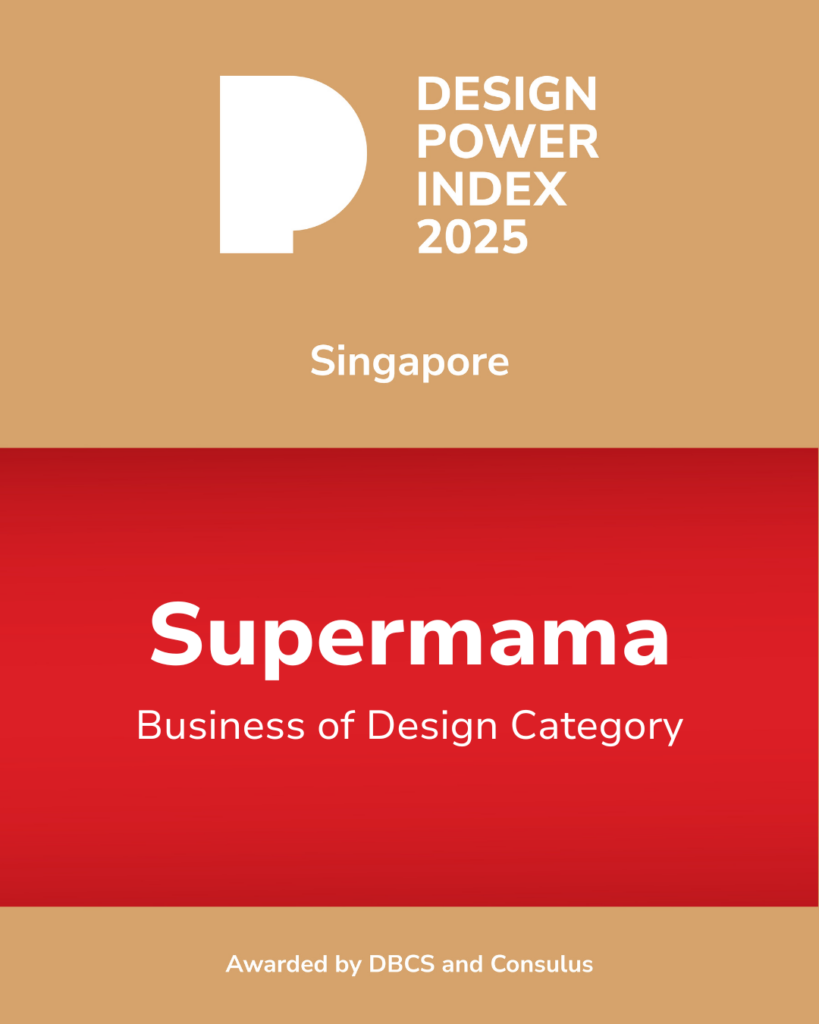DBCS and Consulus are pleased to announce that GovTech is admitted into the Design Power Index (DPI) 2025.
The Design Power Index is an economic premise and framework based on three key questions:
1. Does design generate economic value?
2. If yes, what is the value?
3. Is the nominated organisation great at harnessing the power of design to generate economic value and shape societal impact?
This inaugural index is launched by the Design Business Chamber Singapore (DBCS) in partnership with its global knowledge partner Consulus, a global impact investment and creative change firm, as part of DBCS’s 40th anniversary.
Companies and organisations are first shortlisted from a wide range of industries and then nominated. By accepting the nomination, honorees affirm that design shapes economic value through their business model, products, and services. Acceptance also means they agree to participate in an assessment the following year for the Design Power Index 2026, ensuring a deepening study on the value of design for economic growth. Acceptance of nomination, use of the logo, and participation in next year’s survey are without fee.
As of now, the estimated total market value of the private and listed companies who have accepted the nomination has reached SGD 20 billion. For the non-profit organisations included, their work impacts the lives of Singaporeans.
GovTech
GovTech is a powerful example of a government statutory board that has achieved significant growth and impact by seamlessly integrating design and technology. Its mission is to humanise technology, making complex governmental services intuitive, desirable, and accessible to every citizen. The economic value it generates is seen in the enhanced productivity, efficiency, and trust in the public sector.
The agency’s success is a direct result of its focus on optimising user experience (UX/UI) for a national scale. By applying design thinking to public services, GovTech has created a suite of digital products, like Singpass, Culture Pass, and the TraceTogether app—that are exercises in “invisible design”. These platforms have made interacting with the government effortless and engaging for millions of users. This excellence in design is a crucial competitive advantage in the public sector, fostering rapid citizen adoption and engagement.
This design-led approach has been instrumental in driving adoption and fundamentally altering how citizens interact with the government. By making technology not just functional but a pleasure to use, GovTech has built a foundation of trust and efficiency. Its work proves that when design is at the core of public service, it can create a powerful new ecosystem of digital governance, with a quantifiable impact on the nation’s digital readiness and economic resilience.
About the Design Power Index (DPI)
The Design Power Index (DPI) is the world’s first longitudinal economics index designed to measure and track the economic value generated by companies through the strategic use of design and the creation of design intellectual property (IP). Showcasing 40 companies and 20 organisations recognised for their business growth, market creation, technological innovation, and social impact through design, the inaugural DPI 2025 provides a holistic lens of design’s contribution to the economy.
Developed by the Design Business Chamber Singapore (DBCS) in partnership with Consulus, the DPI analyses design’s impact across four dimensions:
- Business of Design — Companies who have achieved revenue and growth through creating unique intellectual property by design
- Market of Design — Companies who have harnessed design to create a new business category
- Technology of Design — Companies who have used design to innovate and shape use-behaviour
- Social Impact of Design — Companies/organisations who use design to shape societal change or impact
Like what you read?
Follow us on Instagram, Facebook, Linkedin and Youtube to get the latest updates!
Related Post









